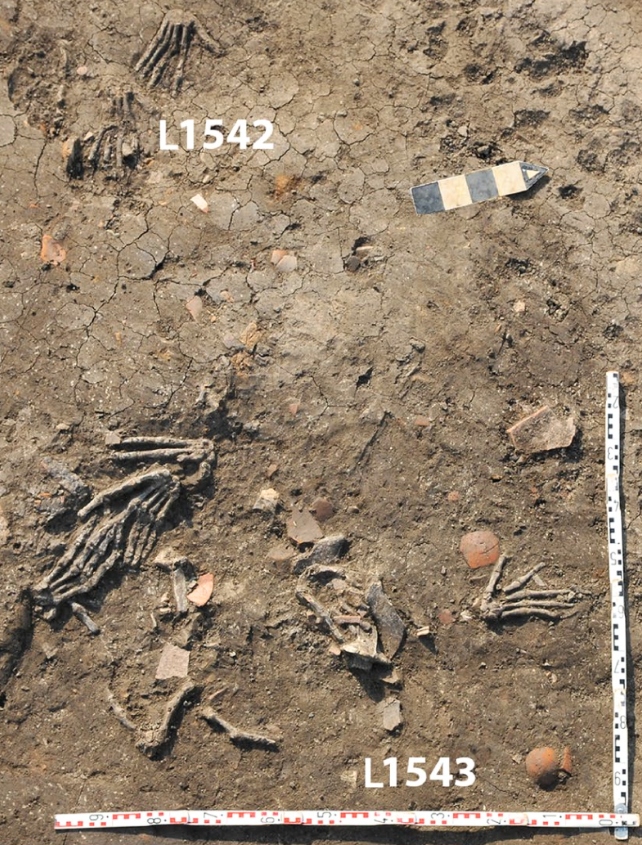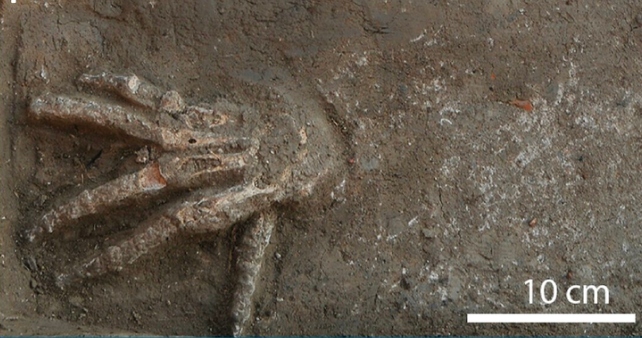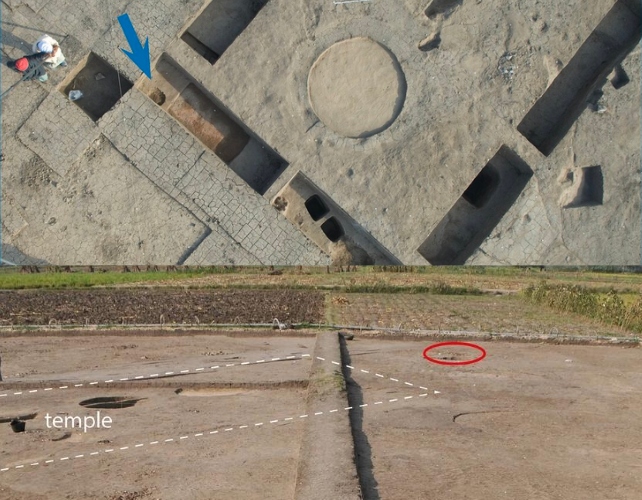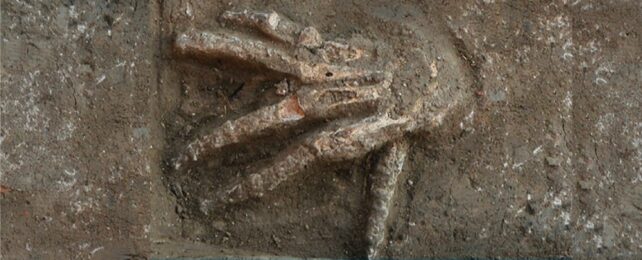A dozen severed hands found piled in the courtyard of an ancient Egyptian palace could be the result of a gruesome "trophy-taking" ritual by a foreign invader, according to a new study.
Inscriptions and reliefs from Egyptian tombs and temples depict mutilated or amputated hands as early as the New Kingdom from the 16th to 11th centuries BCE. According to the authors of this new study, this is the first time archaeologists have found and analyzed the actual amputated hands.
"They belonged to at least eleven males and possibly one female, which may indicate that women and warfare were not worlds apart," the study authors write in their published paper.
The team conducted their analysis on what they determined to be right hands that were originally found in 2011, buried in three separate pits in the courtyard of the Hyksos palace at Avaris/Tell el-Dab'a in northeastern Egypt.

The palace dates to the 15th Dynasty (1640-1530 BCE), when the Hyksos kings ruled over Lower and Middle Egypt all the way up to the city of Cusae, today known as El Quseyya. The Hyksos were thought to be invaders of Egypt and their kings the civilization's first foreign rulers, although recent evidence shows this may have been misunderstood.
According to the German and Austrian research team, the severed hands found in the pits come from a minimum of 12 adults, although the discovery of multiple incomplete hands and fingers mean there could have existed up to 18 hands in total.
Led by paleopathologist Julia Gresky from the German Archaeological Institute in Berlin, the team first considered taphonomic causes for the particular placement of the severed hands. Taphonomy examines bodies and body parts after death, assessing preservation, decomposition, and fossilization processes.
While it's not uncommon for body parts to drift apart over time, separated violently by flood or scavenger, or gradually by weathering and erosion, the researchers think the severed hands might have been deliberately placed.
"After removing any attached parts of the forearm, the hands were placed in the ground with wide-splayed fingers, mainly on their palmar sides," the authors write.

Proximal row carpal bones, a set of 8 small bones in the wrist that connect hands to forearms, were found to be intact in 6 of the 12 hands examined. No lower arm bone fragments were found, leading researchers to suggest the hands were deliberately amputated, by slicing through the joint capsule and then cutting across the tendons that cross the wrist.
"Mutilating people without regard to their survival is often done by severing the arm at any anatomical position," Gresky and colleagues explain.
"This method is faster and easier, but it leaves a section of the lower arm attached to the hand. If this was the case with these hands, the people offering them, or those in charge of the ceremony, cared enough about their proper presentation to detach parts of the lower arm," the authors add.
When the hands were discovered in the pits, they were still "soft and flexible", as the researchers put it, which indicates that the hands were either buried prior to the onset of rigor mortis or shortly after it had passed.
Rigor mortis begins a few hours after death, peaks at 12 to 24 hours, and – depending on variables such as humidity, temperature, and the deceased's age and physical condition – usually subsides within 1 to 3 days.
Onset also varies for different body parts, and rigor mortis of the hand commonly begins 6 to 8 hours after death. So the scientists concluded that the individuals were likely dismembered during or shortly before a ceremony, with the hands being placed in the pit once rigor mortis had passed.

According to the researchers, right-hand amputation was practiced in Egypt by the Hyksos some 50 to 80 years before it was recorded in tomb hieroglyphs.
"The Egyptians adopted this custom at the latest in King Ahmose's reign, as shown by a relief of a pile of hands at his temple in Abydos," they write.

One of the most important questions this study proposes to answer, according to the authors, is whether the mutilation was a form of punishment or a trophy for military victories.
"The location, treatment, and possibly the positioning of the severed hands argues against the hypothesis of law-enforcing punishment as the motivation for these acts," they argue.
The pits where the hands were buried were located in the grand forecourt of the palace, in front of the throne room. The team think the fact that they were placed in such a prominent location visible to the public eye is a testament to how widespread this "trophy-taking" practice was.
The research has been published in Scientific Reports.
